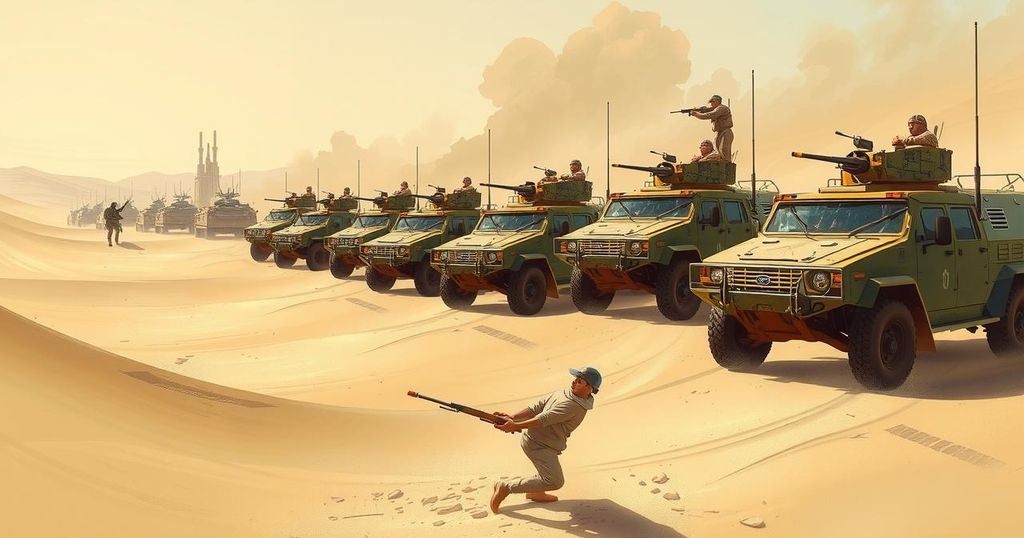Uganda Enhances Military Presence in South Sudan Amidst Rising Conflict

Uganda has increased its military presence in South Sudan through Operation Mlinzi wa Kimya amidst intensifying conflict. The UPDF’s deployment is aimed at supporting the South Sudanese government amid rising tensions, with both criticism and justification surrounding the intervention related to historical military pacts. The crisis has worsened due to clashes with the White Army, prompting strong warnings from government officials.
Uganda has reinforced its military presence in South Sudan with additional troop deployments under “Operation Mlinzi wa Kimya,” aimed at addressing the escalating conflict between government forces and armed groups. This troop movement comes in response to recent fighting in Upper Nile State and ongoing political unrest in Juba. Col. Chris Magezi, acting army spokesman, emphasized the Uganda People’s Defence Force’s (UPDF) commitment to fostering regional stability and assisting South Sudanese government forces.
Prior to deployment, Lt. Gen. Kayanja Muhanga, UPDF Commander Land Forces, briefed the troops at the 4 Infantry Division Headquarters in Gulu, highlighting the importance of vigilance and readiness for their upcoming mission tasks. The operation began on March 11, 2025, with initial special operations forces entering via Juba International Airport, followed by additional task force elements via Bibia and Nimule along the Uganda-South Sudan border. Brig. Gen. Anthony Mbuusi Lukwago, an experienced officer in counterinsurgency, leads the operation.
The presence of Uganda’s military in South Sudan has provoked regional debate, although South Sudan’s government has defended the intervention, referencing a longstanding bilateral military agreement to combat insurgent threats such as the Lord’s Resistance Army (LRA). South Sudan’s Minister of Information, Michael Makuei Leuth, affirmed that this deployment reflects the historical security arrangement between both nations, stating that the UPDF serves as support and technical units to aid in the fight against insurgency.
Contrarily, opposition activists contend that Uganda’s involvement predominantly aims to bolster President Salva Kiir’s government amid rising opposition pressures. Additionally, Gen. Muhoozi Kainerugaba, Uganda’s Chief of Defence Forces, asserted that any opposition against President Kiir would be viewed as a “declaration of war against Uganda,” reinforcing Uganda’s commitment to Kiir’s administration.
The conflict in South Sudan has intensified, marked by violent clashes between government forces and the White Army, a powerful Nuer militia. Recent skirmishes in Upper Nile State, particularly near Nasir, have resulted in significant casualties, including an attack on a UN helicopter that claimed the life of a crew member and a senior South Sudanese officer. Minister Makuei warned the White Army to withdraw from government-declared military zones to avoid repercussions.
In light of the conflict, Uganda’s NRM Parliamentary Caucus has expressed unanimous support for the UPDF deployment to prevent further destabilization. The international response from the UN and other actors regarding Uganda’s justification under the historical anti-LRA pact remains pending.
In conclusion, Uganda’s military deployment to South Sudan under Operation Mlinzi wa Kimya is positioned as a strategic response to the ongoing conflict, supporting the South Sudanese government amidst rising tensions. While the Ugandan government emphasizes long-standing bilateral agreements, critics argue that the intervention serves to reinforce President Salva Kiir’s administration. The situation remains volatile, with significant implications for regional stability and international diplomatic relations.
Original Source: chimpreports.com








